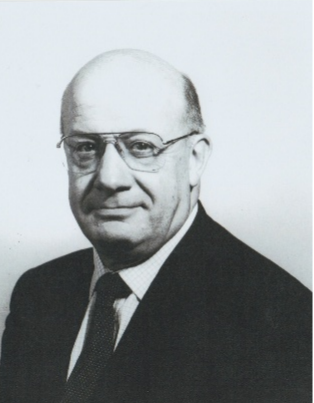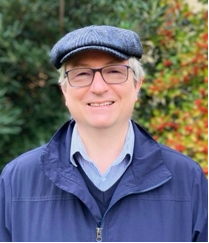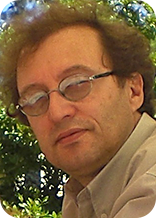Call for Papers — Photochemistry and Spectroscopy: In Honour of Prof. Giuseppe Zerbi for His Contributions to Molecular Spectroscopy and Advanced Materials
Photochemistry and Spectroscopy (PS) is delighted to launch a volume to honour Professor Giuseppe Zerbi, a visionary scientist whose groundbreaking contributions have profoundly shaped the fields of molecular spectroscopy and advanced materials. As early as the 1960s, Professor Zerbi was among the first to recognize the potential of molecular spectroscopy — particularly vibrational spectroscopy — not only as an analytical tool but also as a powerful method for investigating molecular structure and dynamics. Inspired by this insight, he established a truly interdisciplinary school where chemists, experimental and theoretical physicists, and engineers trained side by side, harnessing the synergy between experimentation and theoretical modeling.
In the study of polymers, Professor Zerbi connected the molecular approach with solid-state physics methods, illustrating how symmetry principles can be used to understand phenomena that arise from the structural regularity of polymer crystals and the effects of chemical and conformational defects. This methodological framework supports his original contributions to understanding π-conjugated materials, which include conducting polymers, molecular systems, and graphene-based materials. He also pioneered the innovative use of instrumentation, consistently seeking new experimental setups and techniques to explore unique materials resulting from collaborations with leading groups in the design and synthesis of organic materials for molecular electronics and photonics.
Those of us who had the privilege of working in the research group he led feel proud and deeply grateful for the scientific and human legacy he has left behind. It is with great joy that we celebrate Professor Zerbi through this volume.
We are pleased to welcome the contributions of his colleagues and friends who, over the years, have come to appreciate not only his scientific excellence but also his open, warm, and engaged approach to collaboration and mentorship. All articles published in Photochemistry and Spectroscopy (PS) are Gold Open Access: immediately freely available to read, download, unlimited use, and reuse of articles. Article Processing Charges (APCs) are waived before December 2026.
For the PS journal website, please visit: https://www.sciltp.com/journals/ps
For the submission, please visit: https://sciflux.org/authors/submissions
For the News, please visit: https://www.sciltp.com/news/2505141015299232
For Early Access Publications, please visit: https://www.sciltp.com/journals/ps/volumes-and-issues/earlyAccess
Chiara Castiglioni
Matteo Tommasini
Rui Fausto

Professor Giuseppe Zerbi was born in Saronno in 1933. He earned his degree in Chemistry from the University of Pavia in 1956. Soon after, he began his career as an assistant to Nobel laureate Giulio Natta at the Politecnico di Milano. Expanding his research experience internationally, he worked as a guest scientist at the University of Minnesota from 1959 to 1962. Upon returning to Italy, he joined the National Research Council of Italy (CNR) as a researcher, once again working at the Politecnico di Milano. During this period, he also spent a year at the National Bureau of Standards in Washington, D.C.
In 1968, Zerbi was appointed director of the Institute of Macromolecular Chemistry at CNR in Milan, a position he held for seven years. In 1975, he transitioned fully into academia, accepting a chair in Molecular Spectroscopy at the University of Trieste. In 1980, he returned to the Politecnico di Milano, where he held a chair in Materials Science and continued his academic and research activities for the remainder of his career.
Zerbi is recognized as a pioneering figure in Vibrational Spectroscopy. His approach — combining experimental research with empirical and quantum mechanical modelling — provided profound insights into the molecular and electronic structures of materials. His research primarily focused on the use of vibrational spectroscopy to study the structure, dynamics, and properties of organic materials, polymers, and organic electrically conducting polymers. Notably, polyacetylene (PA) was first synthesized by Natta et al. in 1958 but remained largely overlooked until 1975, when Japanese researchers demonstrated its electrical conductivity. This discovery ignited tremendous scientific and industrial interest, leading to debates between two schools of thought: one rooted in chemistry and the other in physics. At the Politecnico di Milano, Zerbi led a multidisciplinary research team comprising experts in chemistry, spectroscopy, physics, theoretical chemistry, and materials science. His molecular approach became a cornerstone of research in this field.
Over his career, Zerbi published more than 500 papers in international journals and delivered numerous invited lectures at specialized conferences, industries, Gordon Conferences, and cultural institutions. He also served on the editorial boards of several scientific journals. His contributions were widely recognized with numerous prestigious awards, including:
- Coblenz Society Award (1964)
- OSA Lippincott Medal (1996)
- Ital Gas Prize (1986)
- Max Planck Society Prize (1993)
- Bonino Medal of the Italian Physico-Chemical Society (2022)
He was also honoured as a Fellow of the American Physical Society (1981) and elected a member of the Accademia Nazionale dei Lincei (2004).
Beyond research, Zerbi was deeply involved in education and academic governance. He served for four years as an elected member of the Academic Senate of the Politecnico di Milano. He played a pivotal role in advanced training programs, serving as Director of the Specialization School in Polymer Science and of the Doctoral School at the Politecnico di Milano. For several years, he also designed and directed a course on cultural heritage conservation, where he lectured on the applications of infrared and Raman spectroscopy in art and archaeology.
In recognition of his exceptional contributions, the Politecnico di Milano awarded him the title of Professor Emeritus in 2010.
Academic Editors

Chiara Castiglioni is a full Professor of Materials Science and Technology in the Department of Chemistry, Materials, and Chemical Engineering Giulio Natta at Politecnico di Milano. She coordinates the Laboratory of Molecular Spectroscopy within the Laboratory of Organic Functional and Nanostructured Materials. From 2010 to 2019, she served as Coordinator of the PhD Program in Materials Engineering at Politecnico di Milano. She is a member of the Editorial Board of the Journal of Raman Spectroscopy, a member of the International Advisory Board of the Congress on Synthetic Metals (ICSM), and a member of the Steering Committee of the European Congress on Molecular Spectroscopy (EUCMOS). She has been mentored by Giuseppe Zerbi and Mariangela Gussoni, and the collaboration with them had a profound impact on her research journey, dealing with the molecular spectroscopy and theoretical modeling of semi-conducting organic materials and polymers, polycyclic aromatic molecules, graphenes, and carbon nanotubes. Her recent interests concern the development and spectroscopy of graphene nanoparticles and doped conducting polymers and applications of the micro-spatially offset Raman spectroscopy (SORS) to cultural heritage. She has co-authored approximately 260 scientific papers published in peer-reviewed international journals.
h-index is 44. ORCID: https://orcid.org/0000-0002-6945-9157

Matteo Tommasini is a full professor of Materials Science and Technology in the Department of Chemistry, Materials, and Chemical Engineering Giulio Natta at Politecnico di Milano. He coordinates the Vibrational Spectroscopy group (VISPEC) within the Società Italiana di Ottica e Fotonica (SIOF). He has investigated the spectroscopic behavior of materials since completing his thesis in Nuclear Engineering (1998) and earning his PhD in Materials Engineering (2002) under the guidance of Professors Chiara Castiglioni and Giuseppe Zerbi. His research focuses on characterizing molecular materials using electronic and vibrational spectroscopy techniques interpreted through quantum chemical methods. The investigated systems include nanostructured carbon, graphene molecules, organic functional materials, and polymers. He also examined drug detection methods for clinical applications that utilize Surface-Enhanced Raman Spectroscopy (SERS). He has co-authored approximately 200 scientific papers published in peer-reviewed international journals.
h-index: 44; ORCID: https://orcid.org/0000-0002-7917-426X

Rui Fausto is full Professor and the Coordinator of the Computational Chemistry, Spectroscopy and Thermodynamics research group at the University of Coimbra (Portugal), and Professor and the ERA-Chair holder of the Spectroscopy@IKU: Manipulating and Characterizing Molecular. Architectures: From Isolated Molecules to Molecular Crystals at the Istanbul Kultur University (Türkiye). He is the President of the Steering Committee of EUCMOS, the Editor-in-Chief of Photochemistry and Spectroscopy and a member of the editorial boards of several scientific journals. Throughout his career, Rui Fausto has hold prominent administrative and scientific roles in the Academia, including the presidency of the Institute for Interdisciplinary Research, the presidency of the Coimbra Chemistry Research Centre, and the vice-presidency of the Scientific and Directive Boards of the Faculty of Sciences and Technology of the University of Coimbra. He was awarded twice the Excellence Prize in Sciences by the Portuguese Science Foundation. Rui Fausto has published or edited nearly 50 scientific books and is author of over 500 research articles mostly focusing the photochemistry of organic molecules and of matrix-isolated reactive intermediates. He is one of the pioneers in using vibrational excitation to induce chemical reactivity in organic molecules under matrix-isolation conditions, and has also an extensive and influential work on the photochemistry of reactive intermediates and quantum mechanical tunnelling. Besides science, his interests also extend to music, painting, and human rights advocacy.
h-index: 58. ORCID: https://orcid.org/0000-0002-8264-6854

